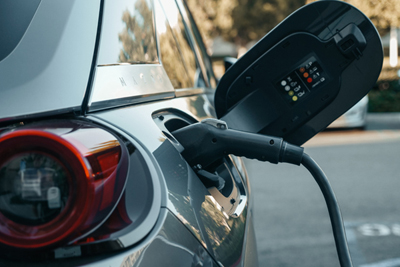As the automotive industry continues to shift towards electric vehicles (EVs), collision repair businesses have a significant opportunity to stand out by investing in the training and equipment necessary to repair EVs properly.
While EVs offer many benefits, including reduced emissions and lower operating costs, they do present unique challenges when it comes to collision repair.
One of the main differences between repairing an EV and an internal combustion engine (ICE) vehicle is the safety considerations. In an ICE vehicle, the primary safety concern is fuel, while in an EV, it's the high-voltage battery system. High-voltage batteries require specialized knowledge and equipment to disconnect and remove them safely from the vehicle during repair. Collision repair businesses must invest in safety equipment and ensure their technicians are properly trained in handling and disposing damaged batteries.
Another challenge for collision repair businesses is the need for specialized diagnostic equipment to identify and repair faults in the electrical system. EVs have complex electrical systems that require specialized diagnostic equipment to interface with the car's computer systems and determine the extent of the damage. This diagnostic equipment can be expensive, and not all repair businesses may have the resources to invest in it.
However, this investment can pay off in the long run, as it allows technicians to accurately identify the damage and ensure the vehicle is fully repaired to its original standards. Additionally, this investment serves as a moat, of sorts, against the competition. For shops willing to invest, the growth opportunities provided by EVs are immense.
EVs also have unique structural components that require specialized knowledge and training to repair. For example, many EVs have aluminum or carbon fiber bodies that require specialized welding techniques. Repair businesses must have the necessary training and certification to perform these repairs properly. Failure to do so can result in additional damage to the vehicle or even compromise its safety.
This, among other reasons, will likely force collision repairers to specialize. While this evolution toward specialization among collision repairers is already underway, this process will likely only continue to speed up as cars continue to become more advanced and parts become even more difficult to obtain.
Investing in the training and equipment required to repair EVs properly can also represent a significant opportunity for collision repair businesses. As more consumers choose EVs over ICE vehicles, the demand for skilled technicians to repair these vehicles is only going to increase. By positioning themselves as experts in the field, collision repair businesses can set themselves apart from their competitors and capitalize on this growing demand.
Moreover, manufacturers are now providing more support to collision repair businesses that wish to invest in training and equipment to repair EVs properly. For example, Tesla has developed a collision repair program that provides collision repair businesses with access to specialized training and equipment to repair its vehicles. Rivian offers a helpline for shops within their collision program, providing real-time assistance from a real person for any technical questions or issues shops might have.
In addition, some manufacturers are also providing repair businesses with access to online resources and support to help them repair EVs properly. These resources can include technical manuals, repair procedures and diagnostic tools, all of which can help repair businesses accurately diagnose and repair damage to EVs.
Finally, investing in the training and equipment necessary to repair EVs properly can also help repair businesses attract new customers. As more consumers become aware of the benefits of EVs, many will be looking for repair businesses that have the skills and expertise to repair their vehicles properly. By investing in training and equipment, repair businesses can position themselves as leaders in a rapidly evolving industry and attract new customers who are looking for quality repair services.
In conclusion, as the automotive industry shifts towards electric vehicles, collision repair businesses have a significant opportunity to stand out by investing in the training and equipment necessary to repair EVs properly. While this investment can be challenging, it can also pay off in the long run by positioning businesses as experts in the field, attracting new customers and benefiting from the growing demand for skilled technicians to repair EVs.
With the right investment in training and equipment, collision repair businesses can remain competitive and grow their business in an increasingly electrified transportation sector.
If you’re interested in the world of EVs and their impact on the collision repair industry, be sure to check out The Collision Vision, Autobody News’ collision business-focused podcast. In Episode 6, we feature Kelly Logan, senior manager for Rivian’s collision repair program. We’ll have more EV-focused content coming soon. You can find information about The Collision Vision at www.autobodynews.com/podcasts.










Cole Strandberg